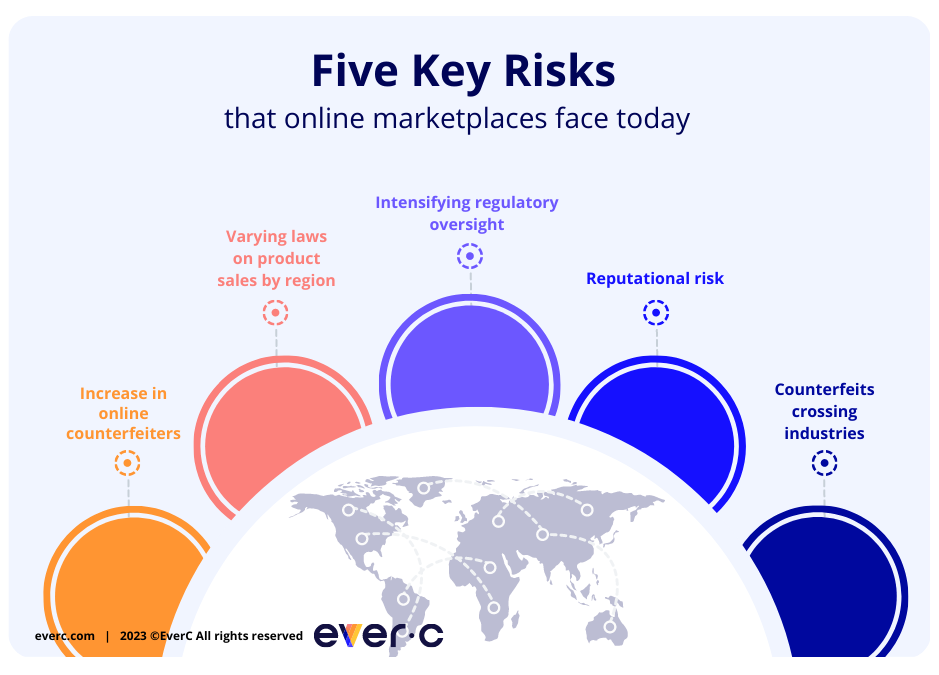This article was originally featured by the Association of Payment Professionals (APP), an industry professional association and community formerly known as the Merchant Acquirers’ Committee (MAC).
Online marketplaces grew rapidly during the COVID-19 pandemic as consumers shopped for food, necessities, and everything else from the safety of their own homes. The result was an unprecedented spike in marketplace growth, and more significantly, consumer behavior was altered forever. What does this mean for marketplace risk going forward?
Growing marketplaces, increasing fraud
According to the U.S. Census Bureau’s Annual Retail Trade Survey (ARTS), ecommerce sales rose from $571.2 billion in 2019 to $815.4 billion in 2020 in the U.S. alone. Digital Commerce 360 found that in 2020, consumers spent an estimated $3.46 trillion globally, and approximately 1 of every 5 consumer dollars was spent online.
Due to the increased demand by consumers for products online, many marketplaces shifted their focus to supply chain and fulfillment capabilities as they continued to grow. With growth came the need to onboard new merchants quickly. Not surprisingly, those looking to sell counterfeit or illicit products also saw this as an opportunity to get their foot in the door to commit fraud.
The challenges of marketplace growth
The tremendous level of growth that was kick-started during the pandemic has leveled off ever so slightly, but rapid growth is expected to continue into the future. Morgan Stanley recently projected that the ecommerce market will grow by more than $2 trillion to a $5.4 trillion market by 2026. This growth brings significant challenges, and those challenges will continue to escalate.

Here are five key risks that online marketplaces face today:
- Increase in online counterfeiters Criminals are flooding the global economy with more than an estimated $1 trillion worth of dangerous, counterfeit products. Ecommerce marketplaces are often the targets of these criminals, who seek easy ways to slide under the radar and stealthily sell illegal goods over the internet without attracting too much attention.
- Varying laws on product sales by region Keeping up with often complex laws that regulate which products can be sold where requires a lot of time and effort. Yet, this is a burden placed on online marketplaces ast they grow and expand into new locations.
- Intensifying regulatory oversight Due to the increase in online fraud, regulators across the globe are issuing new guidelines aimed at protecting consumers. Some of these laws include the threat of heavy fines and other penalties for marketplaces that aren’t doing their due diligence to prevent the sale of counterfeit or illicit products. And even when marketplaces are doing their best to eliminate fraud, they may still be legally held accountable for it.
- Reputational risk Internet-savvy consumers expect marketplaces to remove counterfeit products, as well as to ensure transactions are secure, and their financial information is safe from being compromised. When marketplaces fail in any of these areas, consumers lose confidence quickly and may take their business elsewhere.
- Counterfeits crossing industries Fashion and electronics are two of the product categories where the proliferation of counterfeit products are reported to be the highest. However, no product category is out of reach for bad actors intent on committing fraud by creating fake or lesser quality products that imitate legitimate products.
A solution for marketplace risk
The challenges for online marketplaces are numerous and complex. We’re ready to help your organization meet these challenges. The MarketView solution combines industry expertise and AI to automatically detect fake, illegal, and dangerous products, enabling marketplaces to grow and expand into new regions while mitigating risk.
